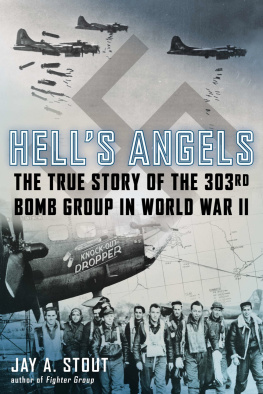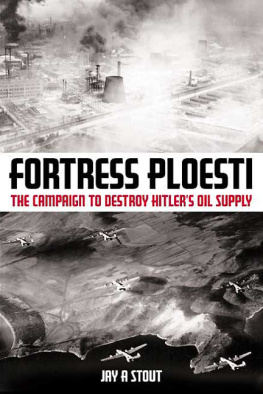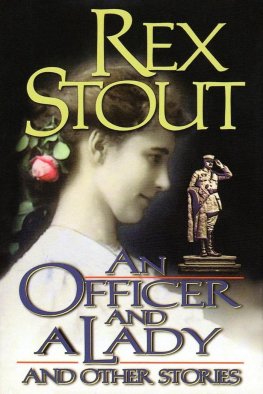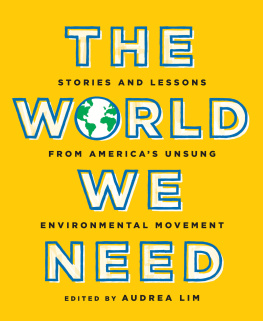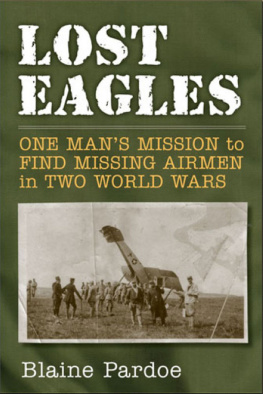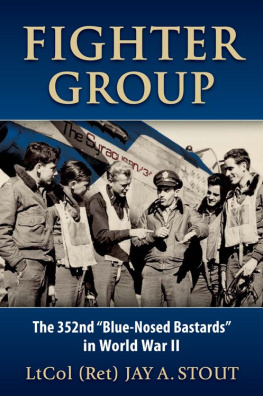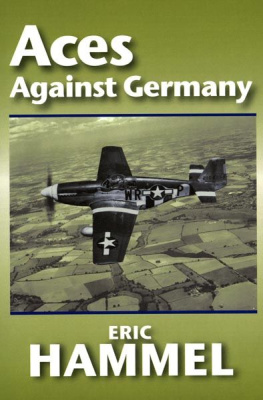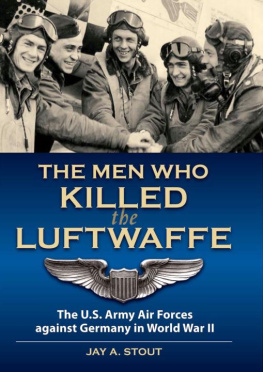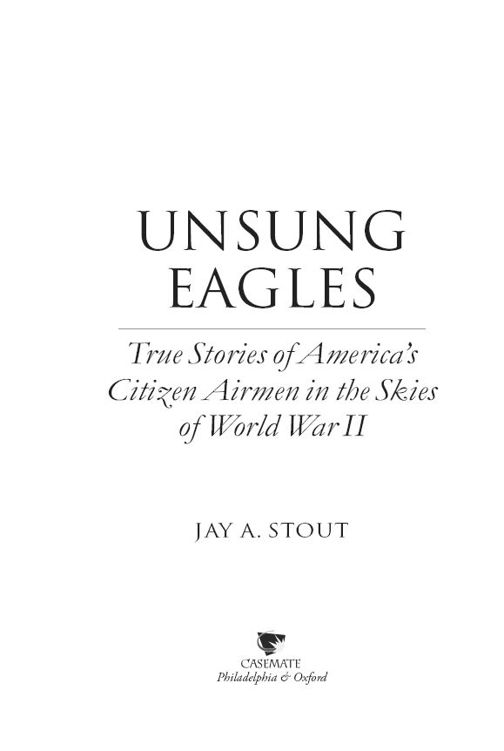
Published in the United States of America and Great Britain in 2013 by
CASEMATE PUBLISHERS
908 Darby Road, Havertown, PA 19083
and
10 Hythe Bridge Street, Oxford, OX1 2EW
Copyright 2013 Jay A. Stout
ISBN 978-1-61200-209-5
Digital edition: ISBN 978-1-61200-210-1
Cataloging-in-publication data is available from the Library of Congress and the British Library.
All rights reserved. No part of this book may be reproduced or transmitted in any form or by any means, electronic or mechanical including photocopying, recording or by any information storage and retrieval system, without permission from the Publisher in writing.
10 9 8 7 6 5 4 3 2 1
Printed and bound in the United States of America.
For a complete list of Casemate titles please contact:
CASEMATE PUBLISHERS (US)
telephone (610) 853-9131, Fax (610) 853-9146
e-mail: casemate@casematepublishing.com
CASEMATE PUBLISHERS (UK)
telephone (01865) 241249, Fax (01865) 794449
e-mail: casemate-uk@casematepublishing.co.uk
C ONTENTS
P REFACE
T HIS WORK FOCUSES ON THE EXPERIENCES AND REALITIES OF those Americans who fought World War II in the air. These are not the already-told-and-retold stories of the celebrated icons of the air war. Rather, they are accounts from the masses of largely unrecognized airmen whoin the aggregateactually won it. They are the recollections of your Uncle Frank who shared them only after having enjoyed a beer or seven at the family reunion, and of your old girlfriends grandfather who passed away about the same time she dumped you. And of the craggy guy who ran the salvage yard on the south side of town; a dusty, fly-specked B-24 model hung over the front counter. In other words these are the everymanbut importantnarratives that are fast disappearing as the last of the generation passes away.
No other work describes how Ensign Ray Crandall was shot down by friendly fire a couple of days prior to the Battle of Leyte Gulf. Or how, miserably hung over, he climbed into his torpedo bomber aboard the escort carrier Manila Bay and flew through multi-colored, phosphorescing explosions of antiaircraft fire to attack the marauding Japanese fleet. They fired their main batteriestheir big gunsat us, which kicked up huge sprays of water that we had to fly through. Or how, absolutely terrified, Crandall almost refused to fly a second mission that day: I told them that when everyone else in the Navy had done it once, then I would go a second time Or how, after having somewhat recovered his composure, he flew a third mission that same afternoon: For some dumbass reason the Japanese had turned around and were running north. We were really ready to hurt them this time.
The New World Encyclopedia and other authoritative sources describe the clash in which Crandall fought thusly: The Battle of Leyte Gulf, also known as the Second Battle of the Philippine Sea, was the largest naval battle in modern history. It was fought in the Pacific Theater of World War II, in the seas surrounding the Philippine island of Leyte, from October 23 to October 26, 1944, between the Allies and the Empire of Japan. Its a fine overview but it doesnt describe the humanness of the battleit doesnt help the reader relive it. It doesnt describe how it really was for Ray Crandall and tens of thousands of men like him.
Likewise, other overarching descriptions fail to include the personal accounts of the men who fought the other great air battles of World War II. It is a gap that this work helps to fill.
However, this is no Greatest Generation love fest. Although the men who fought the war were indelibly imprinted by the Great Depression and the war that ended it, their innate core was no different than that of the generations that preceded and succeeded them. Great men and bad men were part of this group but the vast majority represented themselves as typical. And this was my experience as I interviewed them. I found one or two that might be counted as extraordinary but the majority of the menexcept for their experienceswere unremarkable. I also encountered a couple of first-rate jackasses. In fact, in a couple of instances, the little, mean man in me overpowered the objective historian and decided not to pursue otherwise promising stories simply because the men who lived them were boorisheven contemptible.
Although I havein order to provide some contextincluded some amount of background together with brief discussions of strategy and tactics, the stories in this work concentrate on the individuals. It is important for the reader to get a sense of who they were and where they came from. Too, it is important to understand what motivated them. And although their accounts were lightly edited for clarity and accuracy, a primary goal was to ensure that their voices were preserved as unique and individual.
As I worked with these men I was struck by a number of different aspects. Firstly, it was remarkable that so much was done so quickly. From a flat-footed start during the late 1930s until the end of the war in 1945, a very short span, the United States produced nearly 300,000 aircraft and trained more than two million airmen. And it was done without computers. From todays perspective, when it can take a decade or more to design, fund and build a relatively simple highway project, this achievement is almost incredible.
Nevertheless, it was hardly smooth and not always efficient. This was the conflict that gave us Catch-22 and SNAFU. Leadership was occasionally poor and equipment was sometimes shoddily designed and manufactured. Petty rivalries got in the way of greater things and men often were lost, injured or killed in the great crush of creating a military that could win the war.
Additionally, as already noted, was the fact that these men were not innately special. Rather they lived, adapted and survived during a special time. Their personalities and inherent qualities were no different than those of my peers. And although we tend to see or remember them as old and grandfatherly, they very often drank and caroused and chased skirts with a vigor and enthusiasm that would land them in jail today.
They were human. If it is popular to declare that todays generations are wanting, it should be considered that they are the products of the World War II generation. From those men came McCarthyism and the mistakes of Vietnam. Their children were the baby boomers, the caricatures of the 1960s; they were the flower children, the druggies, the hippies and the draft dodgers. That fact notwithstanding, the World War II generation also raised brilliant, less flashy progeny while winning the Cold War and making our nationwith its manifold positive attributesinto the world leader it is today.
The fact is that these men were individuals who came together to win a great cause. And much of that cause was won in dangerous skies. The stories here describe that winning.
P ROLOGUE
A LL AT ONCE THE OLD MAN STOPPED TALKING AND TILTED HIS face to the ceiling so that the wet in his eyes wouldnt turn into tears and run down his cheeks. He remembered something and it was suddenly difficult for him to talk about friends long gonefriends lost to an enemy who has become one of our nations closest allies. It doesnt seem fair, he said, for the rest of us to have gone on and lived so longmarried and children. And those poor guys we didnt even bring most of them home. They were just gone. I still remember their faces.
The man remembered the war and his friends as he knew them nearly seventy years ago. He remembered them as young, strong-willed, strong-bodied men who answered their nations call to war. They were like young men of any generation. But unlike most young men, their lives were tempered in horrific ways by the skies of war.
Next page

